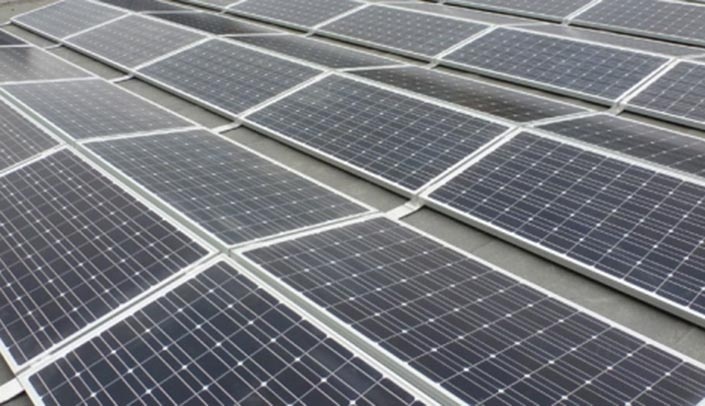UNMC has long been known for its innovative medical research. Now, in partnership with Omaha Public Power District, the med center is taking an innovative approach to energy, as well.
The UNMC campus will soon house 1,487 solar panels atop three campus buildings — the Michael F. Sorrell Center for Health Science Education, the Stanley M. Truhlsen Eye Institute, and the Harold M. and Beverly Maurer Center for Public Health.
The panels will generate up to 500 kilowatts of solar-powered electricity to help power UNMC, beginning in 2019. Installation will start within a month, and while there will be minimal impact to building occupants, project managers will communicate with building occupants prior to any work taking place.
Ken Hansen, associate vice chancellor of facilities at UNMC and vice president of facilities at Nebraska Medicine, said the solar array project is another “great partnership” between UNMC and OPPD.
He pointed to other recent projects and initiatives, which have reduced the campus’s energy load from 29 megawatts to 23 megawatts, even as the number of buildings, students and staff have increased.
“We are excited to work with OPPD to install these solar panels and improve our energy efficiency while also reducing emissions.”
Darren Dageforde, executive director of utilities and energy utilization for UNMC, said the med center has already made great strides in reducing energy use and increasing efficiency.
“Having a renewable energy source on campus demonstrates our commitment to being carbon neutral by 2030 and parallels our mission to create a healthy future for all individuals and communities.”
This solar installation is expected to be the largest rooftop system in Nebraska, said Jared Friesen of Morrissey Engineering, which designed the project.
“Its energy production will equal the average annual electricity use of 60 homes in OPPD’s service territory.”
He said the rooftop arrays will first power the buildings that house them. Any remaining electricity generation will power other campus buildings.
Boyd Jones, the contractor selected during a recent public bidding process, will begin construction of the solar array by late September. It will be energized by January 2019.
OPPD will oversee construction and receive valuable solar-photovoltaic data for the next two years. The utility will study the technology’s impact on reducing peak energy usage on hot summer days, among other areas.
“We continually seek new ways to advance energy services and options to meet our customers’ needs,” said Wyndle Young, manager of mid/small commercial and industrial sales & services for OPPD.
“By working with partners like UNMC, we can add value to the energy solutions we’re providing, which benefit the entire community.”
The solar arrays will use a combination of east and west-facing panels. They will be built to maximize the energy produced in each square foot of roof space used, while reducing shade between rows, and limiting the overall weight added to the roof, Friesen said.
Morrissey Engineering also has provided design services and project management for notable solar installations at the Henry Doorly Zoo & Aquarium’s Skyfari station at the Africa Grasslands exhibit, Lincoln Electric System’s Service Center, the Bellevue Public Safety building, and several Baxter auto dealerships in Lincoln and Omaha.
“We also serve approximately 25 percent of our own office’s energy needs with rooftop solar,” Friesen said.
The project is part of an Interlocal Agreement between the OPPD Board of Directors and the UNMC Board of Regents. It is the latest in a number of energy-efficiency efforts added to the campus since 2012.
Jim Krist, director of OPPD Customer Sales & Services, said partnerships like this are critical to the utility.
“It’s crucial that we build upon these partnerships, so we can understand our customers’ needs and continue to develop strategies that evolve with customer, technology, and market trends.”

Very exciting news! I, for one, am so proud to be working for an organization that is environmentally conscious.
Hi, how much carbon dioxide emissions will be eliminated by using those solar panels? Thank you
Hi Samantha,
This is actually a challenging question…it depends on the amount of sunlight we receive as well as the mix of resources OPPD uses to generate electricity (coal vs. wind/renewables). That said, we are anticipating that this will produce 650,000KWhr of power each year, which would equate out to approximately 500 metric tons of CO2 reduced annually. This is the equivalent of not burning more that 530,000 pounds of coal.
Thank you,
Melanie